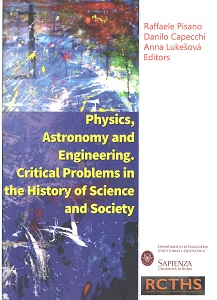HISTORICAL APPROACH TO PHYSICS ACCORDING TO KANT, EINSTEIN, AND HEGEL
HISTORICAL APPROACH TO PHYSICS ACCORDING TO KANT, EINSTEIN, AND HEGEL
Author(s): Young Suh Kim
Subject(s): Philosophy, History of ideas, German Idealism, Philosophy of Science
Published by: Scientia Socialis, UAB
Keywords: Dirac; Einstein; Hadons; Hegel; History of Physics; Kant; Lorentz covariance; Quantum mechanins; Relativity; Taoism;
Summary/Abstract: It is known that Einstein's conceptual base for his theory of relativity was the philosophy formulated by Immanuel Kant. Things appear differently to observers in different frames. However, Kant's Ding–an–Sich leads to the existence of the absolute reference frame which is not acceptable in Einstein's theory. It is possible to avoid this conflict using the ancient Chinese philosophy of Taoism where two different views can co–exist in harmony. This is not enough to explain Einstein's discovery of the mass–energy relation. The energy–momentum relations for slow and ultra–fast particles take different forms. Einstein was able tosynthesize these two formulas to create his energy–mass relation. Indeed, this is what Hegelianism is about in physics. Isaac Newton synthesized open orbits for comets and closed orbits for planets to create his second law of motion. Maxwell combined electricity and magnetism to create his four equations to the present–day wireless world. In order to synthesize wave and particle views of matter, Heisenberg formulated his uncertainty principle. Relativity and Quantum mechanics are the two greatest theories formulated in the 20th Century. Efforts to synthesize these two theories are discussed in detail.
- Page Range: 113-122
- Page Count: 10
- Publication Year: 2013
- Language: English
- Content File-PDF

